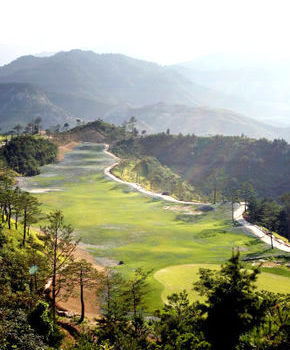 |
|
A golf course, set to be opened in 2007. Yonhap
|
After the Mt. Geumgang tourism started, North Korea has had to move its important military bases to other locations. The port of Jangjeon, the location of the Haegeumgang Hotel, used to be the southernmost base of the North Korean navy. The submarine used by the North Korean armed commandos that infiltrated into Southern waters came out of this port. The fortress that destroyed the South Korean navy ship PCE56 in January 1967 also was located at Haegeumgang beach. Now there are restaurants, golf courses, and hotels in these regions. According to military experts, North Korea had more hidden military facilities on the eastern frontline than on the western frontline. In addition, everybody knows that the road leading to Mt. Geumgang is one of important military passages between the South and the North, along with the roads leading to Gaeseong (Kaesong) and Cheonwon. For this reason, when Hyundai and Pyongyang agreed with the tourism project, experts questioned if North Korea really would open the militarily fortified mountain. Kyungnam University Prof. Kim Geun-shik noted that Pyongyang could not help reworking its military strategies regarding South Korea after opening the mountain. A military analyst, on condition of anonymity, criticized the main opposition Grand National Party’s (GNP) calls to suspend the Mt. Geumgang tourism project, saying, "If they worry the national security, we should maintain the Mt. Geumgang project." Since 2003, in fact, South Korea has paid North Korea about US$13 million annually for the tours to the mountain, less than 1 percent of the $1.4 billion in North Korean exports that South Korea buys each year. If the Mt. Geumgang project stops, South Korean companies will suffer significant economic losses. Hyundai Asan and its cooperative companies have invested about 347 billion won in the business. If it is suspended, it is highly possible that related firms will have to cut employees or go bankrupt due to liquidity problems, as there is no legal mechanism to protect them. Even if the government gives them compensation through political means, the money will have to be paid with people’s taxes.





